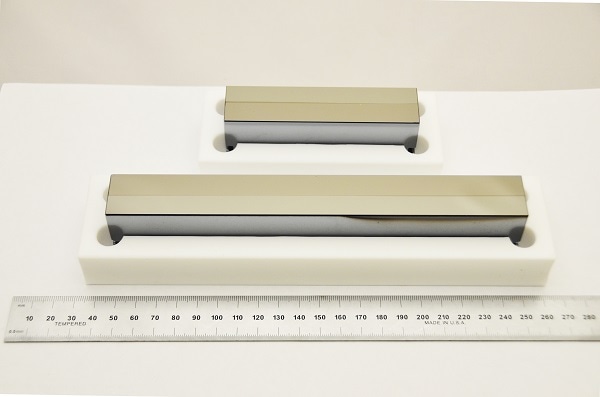Proprietary, cost-effective process restores performance, while new optics deliver high reflectivity and precision

Rigaku Innovative Technologies (RIT), a global supplier of high performance multilayer optics, announces that it cleans and recoats old synchrotron optics to either retask the optics for new applications or to refurbish and repair the coatings to enhance performance. This proprietary process restores the optics’ performance with less lead time and at a far lower cost than purchasing new optics. The company also offers new optics and coatings for synchrotron applications, delivering high reflectivity and precision.
Synchrotron beamline end stations and analytical instruments most often operate with high intensity X-rays. Such high intensity beams can result in damage to single film and multilayer coatings. Because synchrotron and similar custom-made optics typically require extremely precise coatings on premium quality substrates, these substrates and coatings can be very expensive and require long lead times.
RIT has developed a proprietary methodology for the refurbishment, recovery, and restoration of synchrotron optics systems. Rigaku’s refurbishment method is designed to reduce costs and lead time for the setup of experimental and analytical equipment, as well as beamline end stations. Additionally, the process restores damaged multilayers to the same quality and performance as new multilayer optics.
Optical refurbishment is an effective and efficient solution to address the major challenges experienced in synchrotron applications. The process provides: recovery of optical performance by removing the damaged multilayer or single film and re-depositing a new coating; removal of contaminants without damaging the underlying multilayer structure and preservation of the original high quality substrate surface without the need for re-polishing. The process allows for maintainence of low micro roughness on any scale, from Low Spatial Frequency Roughness to High Spatial Frequency Roughness. RIT’s process can restore some damage to high spatial frequency roughness. If the optic is too damaged in any roughness scale, mechanical repolishing may still be required.
RIT also manufactures new synchrotron optics, with high reflectivity and high precision coatings available on mirrors up to 1.5m long. These coatings can be single film, bi-material or tri-material multilayers, with protective top coats and adhesion layers available. RIT is capable of producing optics with coatings in narrow stripes to allow multiple material systems, as well as multiple d-spacing films coated on the same optic. Additionally, the company produces Double Multilayer Monochromators on optics up to 1.5m long. In these applications, substrates such as Si<111> and other natural crystals can form one stripe of the monochromator.
For more information about this process and products, visit www.rigakuoptics.com or visit Rigaku at the ALS User Meeting in Berkeley, CA from October 3-5, 2016.